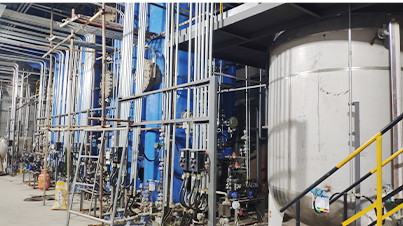Exploring the Application of Poly Aluminium Chloride in Water Purification Processes
The Use of Poly Aluminium Chloride in Water Treatment
Water treatment is a crucial process that ensures safe and clean water for consumption and various industrial applications. Among the various chemicals used in this process, Poly Aluminium Chloride (PAC) has emerged as an effective and widely utilized coagulant. PAC is a type of inorganic polymer that offers several advantages over traditional coagulants, such as aluminum sulfate.
One of the primary benefits of using PAC in water treatment is its enhanced coagulation properties. Due to its high charge density and variable molecular weight, PAC is capable of forming larger and more stable flocs compared to other coagulants. This characteristic makes it highly effective in removing suspended particles, organic matter, and microorganisms from water. As a result, water treatment plants using PAC can achieve higher levels of clarity and reduced turbidity in the output water.
PAC is also known for its versatility across different pH levels. Unlike traditional aluminum-based coagulants that are most effective at specific pH ranges, PAC can function efficiently across a broader spectrum. This adaptability is particularly beneficial for treating water from diverse sources, including surface water, groundwater, and wastewater. Its effectiveness in varying conditions makes PAC a preferred choice for many water treatment facilities.
use of poly aluminium chloride in water treatment

Moreover, the use of PAC can lead to lower dosages required for effective treatment. This is not only cost-effective but also reduces the overall chemical footprint in the water treatment process. Lower chemical usage contributes to less sludge production, thus minimizing the challenges associated with waste management. Furthermore, the reduced residual aluminum in treated water is beneficial for protecting public health and the environment.
In addition to these advantages, PAC has shown to be effective in specific applications, such as the treatment of industrial wastewater and the clarification of drinking water. Its application can extend to various sectors, including municipal water systems and industries that require purifying water for processes.
However, it is essential to monitor the use of PAC closely, as overdosage can lead to negative impacts on water quality and aquatic life. Careful optimization of PAC dosage is necessary to balance efficacy and safety.
In conclusion, Poly Aluminium Chloride is a valuable asset in the field of water treatment. Its superior coagulation properties, adaptability to different pH levels, and cost-effectiveness make it an essential tool for ensuring clean and safe water. As water treatment technologies evolve, the role of PAC will likely continue to expand, contributing positively to water quality management worldwide.
-
Water Treatment with Flocculant Water TreatmentNewsJun.12,2025
-
Polymaleic AnhydrideNewsJun.12,2025
-
Polyaspartic AcidNewsJun.12,2025
-
Enhance Industrial Processes with IsothiazolinonesNewsJun.12,2025
-
Enhance Industrial Processes with PBTCA SolutionsNewsJun.12,2025
-
Dodecyldimethylbenzylammonium Chloride SolutionsNewsJun.12,2025





